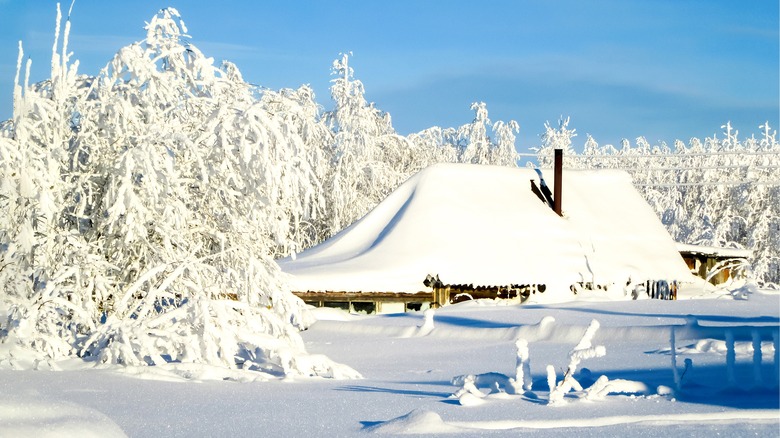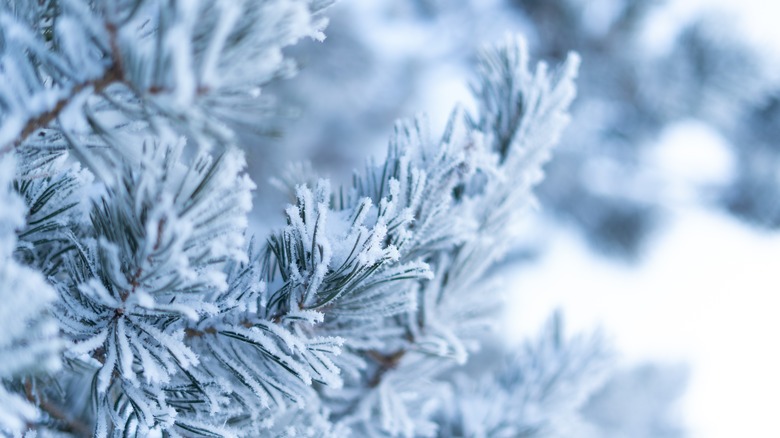This Is Why Snow Is White
Why is snow white? It's a simple question — so simple that you've probably never asked it before. But, when you think about it, snow being white is pretty odd. After all, water is clear, and so is ice. Why isn't snow clear, too?
ThoughtCo tells us that individual snowflakes are, in fact, clear. That's not particularly surprising; they are tiny crystals of ice, after all. But after a snowstorm, the ground becomes blanketed by millions of snowflakes. From afar, our eyes are unable to distinguish these individual crystals. This massive accumulation of snowflakes causes snow's iconic white color, even when each individual flake is clear.
To understand why, we need to turn to physics. As HowStuffWorks explains, when light hits any surface, some of that light is absorbed and some is reflected. An apple, for example, reflects red light waves and absorbs the rest. Transparent objects are different: They let light pass right through. But ice is technically translucent, not transparent. That means that light waves do pass through ice crystals, but not directly. Instead, the waves get slowed down and bent, exiting the ice at angles different from those by which they entered. Once light hits the top layer of a pile of snow, it'll shoot out at a different angle. Then, it'll probably end up hitting another snowflake in the layer below. Once it passes through that second flake, it'll shoot out and hit a third one — and so on, and so on.
Individual snowflakes are clear, but groups of snowflakes reflect white light
After spending some time bouncing between crystals in a pile of snow, light waves will eventually escape the pile. Per HowStuffWorks, these are the waves that end up hitting our eyes.
Even though individual snow crystals let light pass through, piles of snow reflect light back at us. Plus, due to randomly bouncing around any light waves that enter, snow ends up reflecting all wavelengths of light, not just one particular color, as an apple would. You might recall from high school physics that all the wavelengths of light put together form white. Thus, since snow reflects all wavelengths of light, snow appears white.
This property isn't unique to snow. As physics professor Kenneth Libbrecht points out (per Live Science), an individual piece of glass appears clear, like a snowflake. But if you were to smash that glass into tiny pieces, the resulting pile of shards would appear white, for the same reason that snow does.
Of course, snow isn't always white. We've all probably seen muddy snow that's grey or brown, not to mention the rare yellow variety. This discoloration occurs when other substances come into contact with snow. But, says ThoughtCo, even pure snow can take on colors other than white. When snow gets compressed into dense ice — like you'd see in glaciers — it can actually appear blue. Tightly-packed ice crystals bend light slightly differently than looser snow, absorbing waves from the red end of the light spectrum and reflecting bluer ones.

